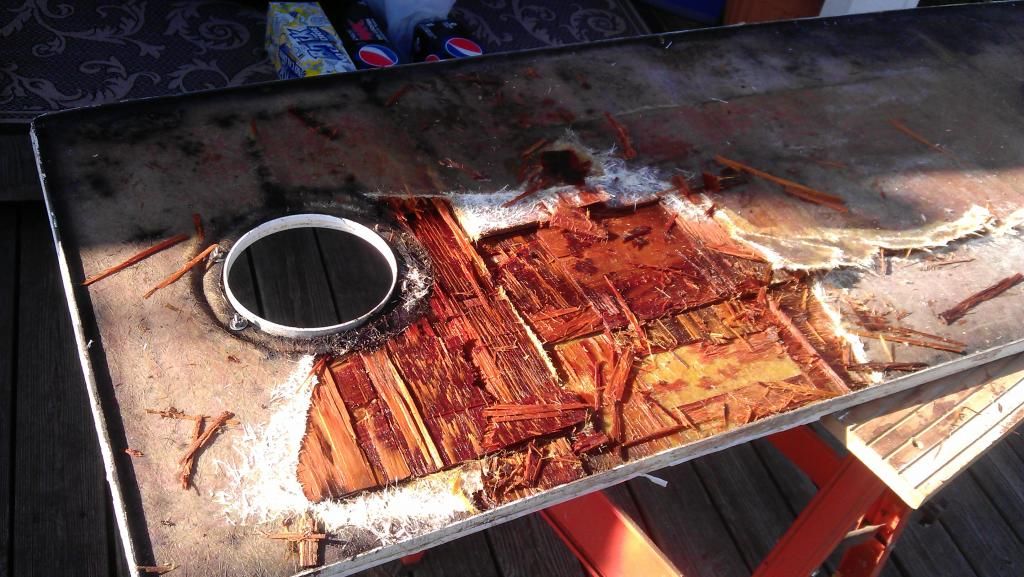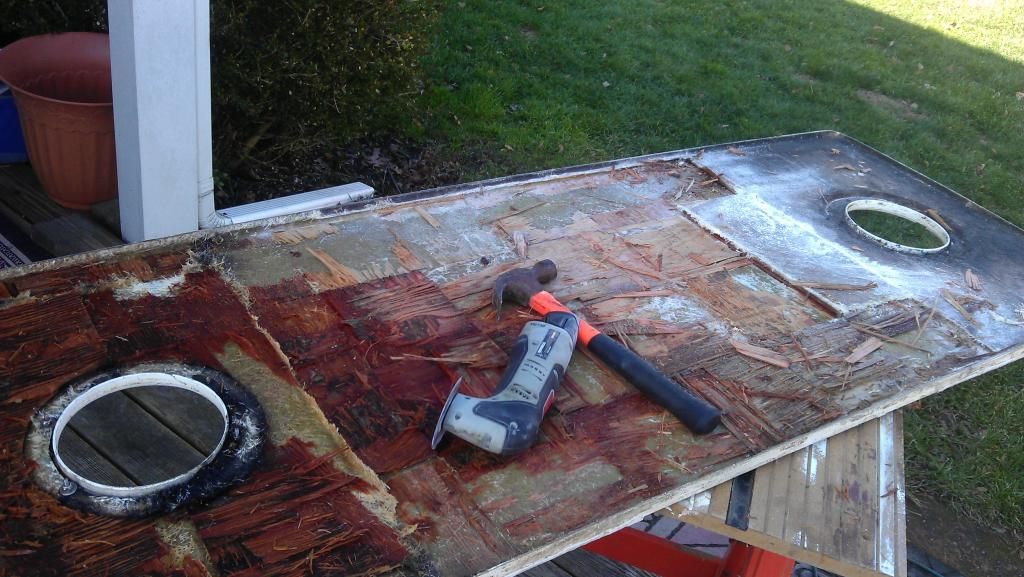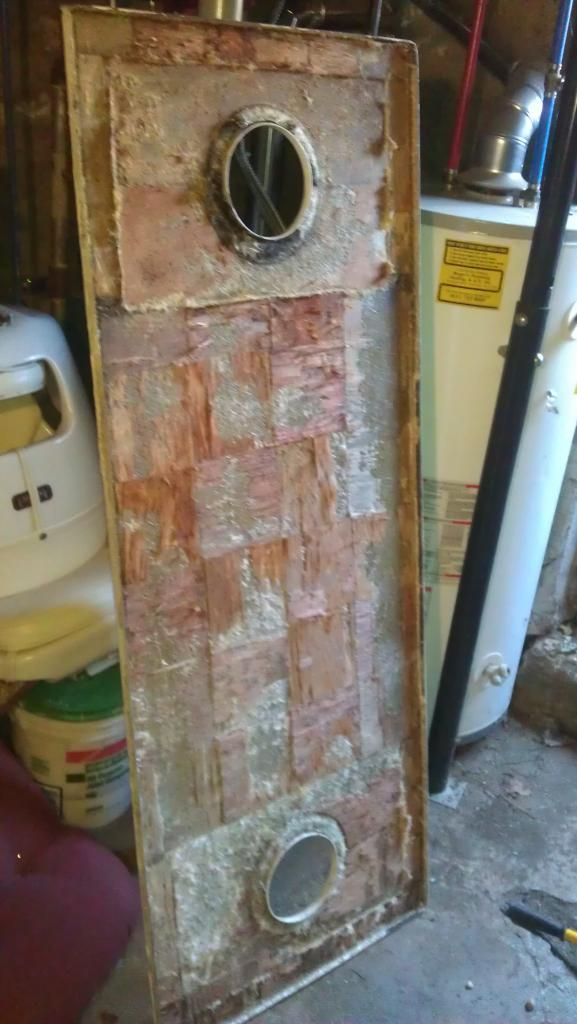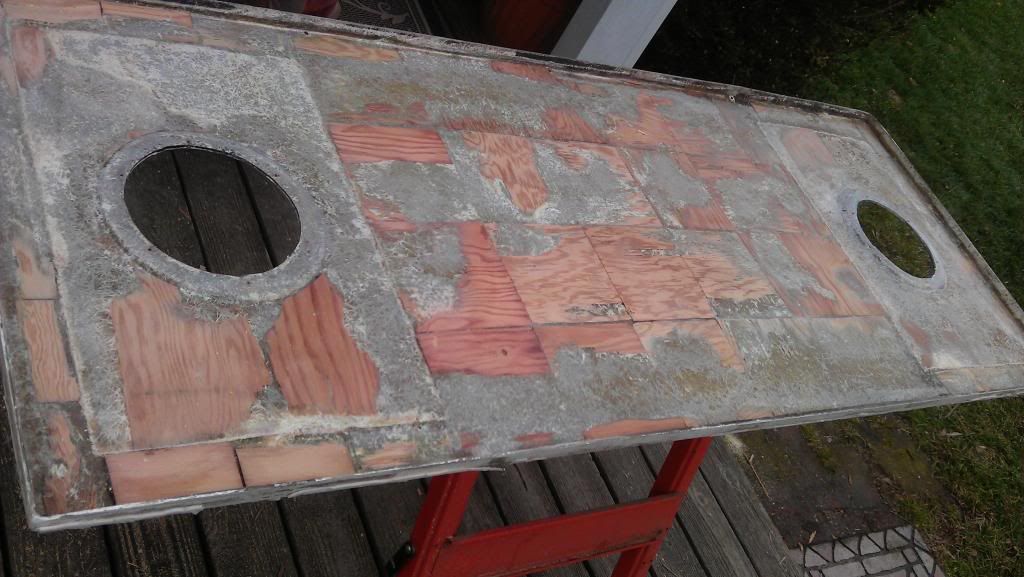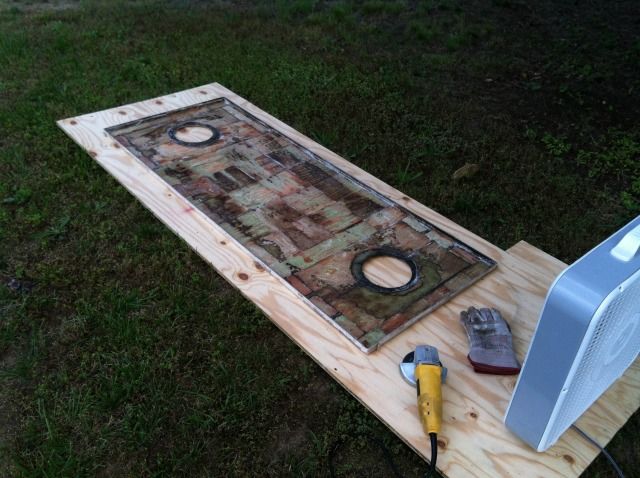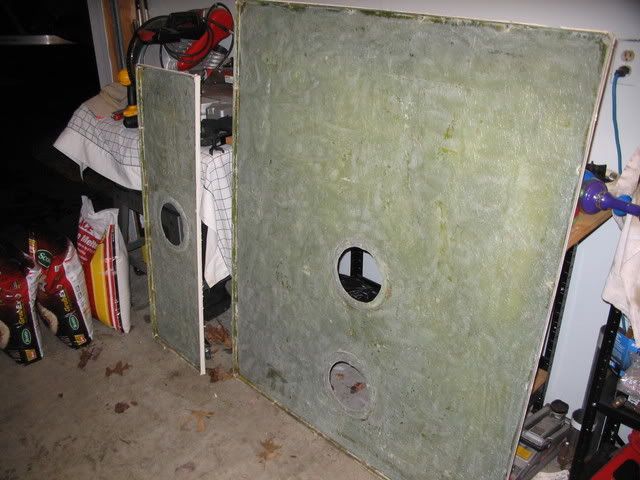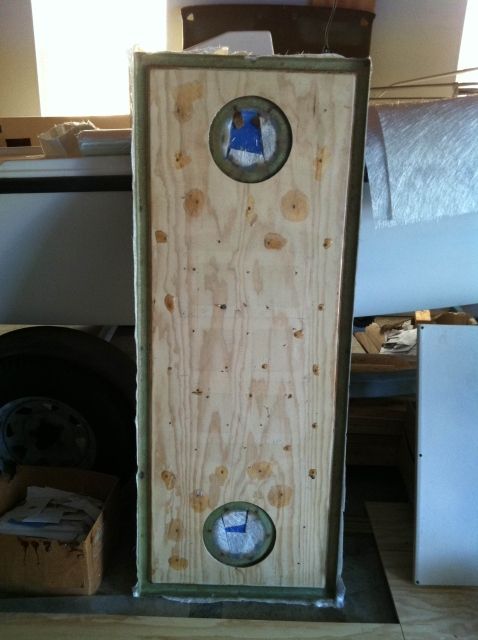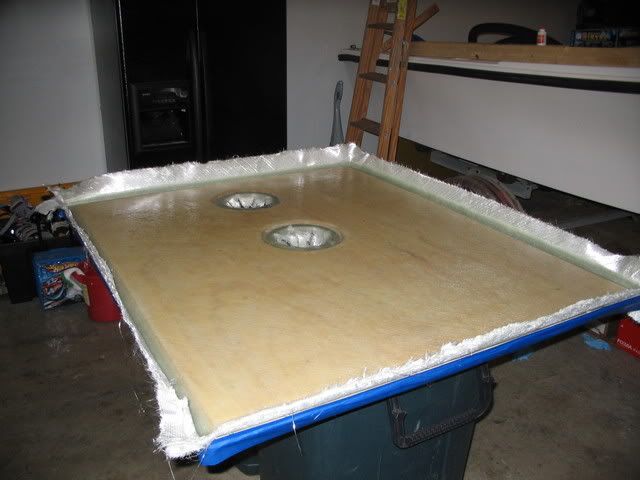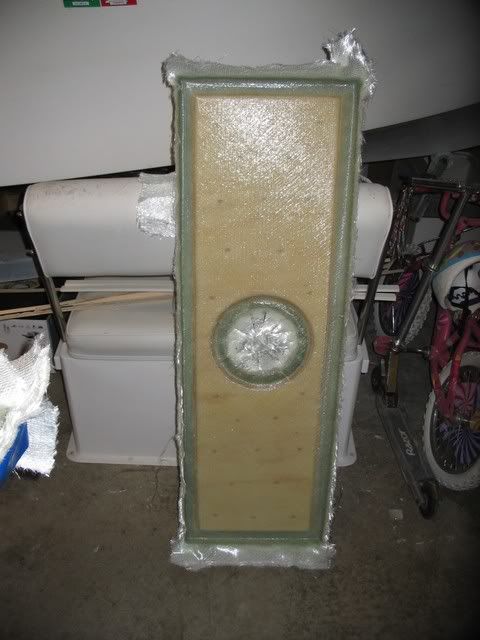Here's how I do mine. Note that not all the photos were from the same hatch. I had to dig through my collection to see what I had to illustrate the various steps.
1. Top skin and core removed. Ready for grinding. Note the fan set up to try and blow away the dust created. Didn't work as well as I had hoped. I really needed a better fan.
2. Grinding w/ a 24 or 36 grit disk almost done. I later went back with a Dremel and 80 grind sanding drum and cleaned up the edges and corners.
3. Core installed. I first washed the panels w/ soap and water, let them dry thoroughly and gave them a wipe down with acetone. On these particular panels, things seemed thin after grinding so I laid down a single layer of 1.5 oz. mat prior to bedding the core. One another panel, I only went with paint on a thin coat of unthickened resin. The core received a coating of unthickened resin followed by a coat of resin thickened with wood flour and applied with a notched trowel. After being set in position, I weighed it down with several cinder blocks.
The holes you see were drilled to allow excess resin and air pockets to escape. You will also notice that the core DOES NOT fully extend to the edges of the panel. It is cut to leave approximately a 1" gap and is beveled at 45 degrees to allow the glass to more easily conform.
4. Glassed over. I start by brushing on a thin coat of unthickened resin in the channels around the edges and then lay a fillet of thickened resin to get rid of the hard corners. Then I put down some skinny strips of 1708 in the channels around the edges followed by a layer of 1708 over the entire think, then some more strips of 1708 in the channels, then another full layer of 1708. You end up with over 1/4" solid glass in those channels.
5. Once cure, trim the excess.
You can either use full sheets of core material, or do the squares thing. The thinking behind the squares is that such a layout is more resistant to warping. All the panels I have done have been with 1/2" A/C (I think) plywood from the home store. Not composite, not even marine ply. One stayed straight, another developed a bow. That one I'm not done with yet, so I have to figure a way to straighten it out.
Hope this helps.


